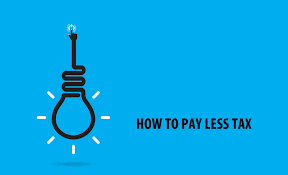Fabulous Ways Successful People Pay Way Less In Taxes
Every taxpayer I know wants to pay less taxes, and the rich are not immune from this desire. Being proactive and strategizing to minimize taxes is something anyone can do, regardless of income or net worth. Typically, that boils down to documenting all of your expenses that could be potentially deducted from your income.
As a financial planner, I am typically there to help people stay on track for their various financial goals like retirement, financial freedom or sending kids to college. Tax efficiency (aka saving money on taxes) sure make that process easier. That is why tax planning is a major portion of every financial road map I put together for clients. After all, it’s not what you make but what you keep.
use the following strategies to minimize the tax liabilities of high-net-worth and/or high-income individuals. Keep in mind that not all of the strategies listed below will work for everyone nor will you necessarily need all of them to achieve all of your financial goals.
They Take Full Advantage of Tax-Advantaged Retirement Accounts
Maxing out retirement accounts is one of the easiest and most common ways that high-income households use to minimize current taxation. For the highest earner, putting away $18,500, per year, is just a drop in the bucket. That individual will likely need to save well beyond that amount to truly make a dent in their tax bills or stay on track for a secure retirement for that matter. If both spouses work, each can contribute $18,500, per year. Individuals who are 50, and older, are allowed to contribute an additional $6,000, per year, as a “catch up contribution.”
The numbers get much bigger, and better, for those who are self-employed or small business owners. They can set up a 401(k) Profit Sharing plan and contribute $55,000, per year, (as employee and employer combined). That alone may be reason enough to hire your spouse. Pre-tax double contributions to this type of plan will make a big dent in your tax bills.
Bigger earners may want to set up what I call the Rich Person Pension or Cash Balance Pension Plan or Defined-Benefit Pension Plan as they’re more commonly called. These types of plans have been growing in popularity over the past few years but interest has skyrocketed since the Trump Tax Plan that started in 2018.

Paying yourself through Pay As You Earn (PAYE)
One option is pay yourself a ‘living wage’ each month from your company’s normal payroll run. This gives you a regular income from the business, and should be based around a budgeted amount that covers your average monthly outgoings.
A downside of this approach is that you’ll be paying PAYE income tax and National Insurance Contributions (NIC) on this monthly salary. Depending on the amount paid, you could end up paying as much as 45% (the top rate of income tax) on this living wage – making it a far from tax-efficient way of paying yourself.
One way to combat this inefficiency is to pay yourself an amount that covers the current NI threshold, making what you earn tax free. This threshold currently stands at $8,424 per year, meaning you could earn $702 per month in this way without any PAYE or NIC.
It’s worth noting that you can pay yourself a wage as a director and still qualify in later life for the state pension. Directors will usually do this by keeping their direct wage below $8k per annum

Get an ISA
One problem with saving money in a standard savings account is that you have to pay tax on any interest you earn on those savings. And with interest rates so low on many savings accounts right now, this really is the last thing we all need.
Related how-to guide
So to avoid this, make sure you invest in an ISA. This is a tax-free way of saving and you can invest up to $10,680 in an ISA each tax year. You can invest the full amount in a stocks and shares ISA, or you can split your investment between a cash ISA (up to $5,430) and a stocks and shares ISA.
You can find out more about the best ISAs around at the moment in the articles A new top instant access ISA and Only 38 days left to grab your tax-free savings allowance.
You can also stash tax-free cash for your children by opening a Junior ISA (up to $3,600 during the current tax year) or by saving into an existing Child Trust Fund (the savings limit on these have now been raised to $3,600 a year in line with the Junior ISA limit). We took a look at the top Junior ISAs on the market at the moment in the article Your child could earn 6% from an ISA. Or you could consider starting a pension for them. Find out more about all these tax-efficient savings options for children in Top tax havens for babies, children and teens.

Managing assets like a business
One way to save on taxes is creating a structure — such as a limited liability company, or LLC — to manage multiple investments. It could include portfolio assets, real estate or a business.
While it could get complex, there may be opportunities to save money while at the same time creating a governance structure for your assets. “If the LLC is a management company that provides oversight and advice to owners of the assets, under certain circumstances the expenses incurred by the LLC will be deductible as business expenses.”
Estate and gift exemptions
Gift and estate deductions help bring down taxable income, but there is even more reason to take advantage of them now.
Thanks to the new tax law, the deductions have been temporarily doubled. Individuals can now claim up to $11.18 million, compared to the $5.29 million limit per person in 2017. The exemption expires after the end of 2025, so the wealthy are taking advantage.
Many of them are setting up long-term trusts, such as a Delaware Dynasty Trust, which allows wealth to be passed down from generation to generation. While it is subject to income taxes along the way, it will not be taxed as a gift if it meets the limit and will not be subject to estate tax when money comes out.
However, given the costs involved in setting up and running a multi-generation trust, it only makes sense when you have $5 million or more to commit.
Key Steps to Paying Less Tax
- Tax laws are not fair. They’re written to favor people who make money a certain way – through businesses and investments, primarily real estate investments.
- The best way to pay less tax is to do what the government wants you to do. Why try to fight the IRS when it’s so easy to just follow the rules, make more money, pay less tax and still sleep at night?
- It’s not how much you make that determines how much tax you will pay – It’s how you make it. Earned income (i.e wages and salaries) is the highest taxed income there is.
- Your Proactive Tax Strategy only works if you develop a custom plan for your own circumstances. Donald Trump’s strategy won’t help the local plumber.
- Tax laws are constantly changing. To pay the least amount of tax legally possible, have frequent meetings with your Tax Advisor and make sure he is current on the tax law changes.
- Your Proactive Tax Strategy only works if you act. The faster you and your team put the dozens of ideas you’ll receive into action, the sooner you’ll put money in your pocket.